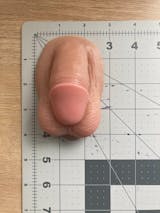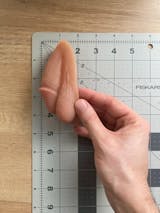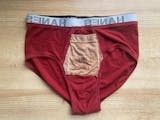Dress for Success: Fashion and Mental Well-Being in Your FTM Transition
Embarking on the journey of transitioning from female to male (FTM) is a significant and deeply personal experience. This comprehensive guide offers valuable tips and guidelines for individuals at the beginning of their FTM transition, covering various aspects such as hair and clothing styles, mental health, hormone therapy, and considerations for top and bottom surgeries.
- Hair Styles for FTM Individuals - Finding Your Look: Choosing a hairstyle that aligns with your gender identity is an empowering step in the FTM transition. Explore short cuts, undercuts, or textured styles that contribute to a more masculine appearance. Consult with a hairstylist experienced in gender-affirming styles to find the look that suits you best.
- Clothing Style Tips - Dressing Authentically: Expressing your gender identity through clothing is an important aspect of the FTM transition. Experiment with styles that enhance your comfort and confidence. Embrace clothing that complements your body shape, and consider wardrobe staples like button-down shirts, tailored jackets, and well-fitted pants to create a more masculine silhouette.
- Prioritizing Mental Health - Seeking Support and Self-Care: Mental health is a cornerstone of a successful transition. Surround yourself with supportive friends, family, and community. Consider seeking the guidance of mental health professionals experienced in transgender issues. Engage in self-care practices that promote well-being, such as mindfulness, journaling, and maintaining a healthy work-life balance.
- Hormone Therapy - Understanding the Process: Hormone therapy is a common component of the FTM transition. Consult with healthcare professionals specializing in transgender care to discuss the potential benefits and risks. Understand the effects of testosterone, the primary hormone used in FTM hormone therapy, on physical and emotional aspects. Regular monitoring and open communication with healthcare providers are key.
- Top Surgery Considerations - Exploring Options: Top surgery, which involves chest masculinization, is a significant step for many FTM individuals. Research different surgical options, such as mastectomy or chest contouring, and consult with experienced surgeons specializing in transgender procedures. Consider factors like recovery time, potential risks, and the outcomes you desire.
- Bottom Surgery - Personal Decisions and Considerations: Deciding whether to pursue bottom surgery is a personal choice. Research different procedures, such as phalloplasty or metoidioplasty, and consult with experienced surgeons to understand the options available. Prioritize clear communication with healthcare providers to address any questions or concerns.
- Hair Style
Choosing the Perfect Hairstyle for FTM Individuals Based on Head Shape
For transgender men (FTM individuals), changing one's hairstyle is often a powerful and affirming step in the journey of self-discovery and gender expression. The key to a successful transformation lies not only in aligning the style with personal preferences but also in considering the unique contours of one's head shape. This article explores how FTM individuals can choose the perfect hairstyle by understanding and embracing their distinctive head shapes.
- Determining Head Shape - A Crucial First Step: Before diving into the world of hairstyles, it's important to identify your head shape. Common shapes include round, square, oval, oblong, and heart-shaped. Each shape comes with its own set of characteristics, and understanding this will help in selecting a style that enhances your masculine features.
- Round Head Shape - Adding Definition: For those with a round head shape, the goal is often to add definition and elongate the face. Shorter sides with more volume on top, textured styles, and pompadours are excellent choices. These styles create the illusion of height and can balance the roundness of the face.
- Square Head Shape - Embracing Bold Styles:Square head shapes can carry off bold and angular styles well. Short buzz cuts, crew cuts, or undercuts with clean lines complement the strong jawline characteristic of a square shape. These styles accentuate the masculinity of the face.
- Oval Head Shape - Versatility in Style: Individuals with an oval head shape have the advantage of versatility. Nearly any hairstyle works well with an oval face. FTM individuals with an oval shape can experiment with short crops, longer styles, or side-parted looks, depending on personal preference.
- Oblong Head Shape - Balancing Length: Balancing the length of an oblong head shape is key. Shorter sides and a bit of volume on top can create the illusion of a more balanced face. Avoiding excessive length can prevent the face from appearing too elongated.
- Heart-Shaped Head - Softening the Forehead: Heart-shaped heads often have wider foreheads and narrower chins. Styles that soften the forehead, such as side-swept fringes or textured bangs, can balance the overall shape. Shorter styles that maintain some volume on top also work well.
- Considering Hair Texture and Density - Personalizing the Look: In addition to head shape, consider hair texture and density. Some styles work better with straight or curly hair, while others suit thicker or thinner hair. Consult with a skilled hairstylist who can tailor the chosen style to your unique hair characteristics.
Choosing the perfect hairstyle is a significant part of the FTM transition, allowing individuals to express their identity authentically. By understanding the nuances of their head shape and considering personal preferences, FTM individuals can confidently embrace a hairstyle that not only complements their unique features but also aligns with their true selves.
Our Latest Articles For FTM Trans Guys:
1. How To Present Yourself as Transman
2. The side effects of Testosterone
3. What if we discontinue hormone therapy
4. How to position an STP packer
6. Beard growth
7. Budget Friendly STP Packers
Choosing clothing at the beginning of a female-to-male (FTM) transition can be an important step in expressing one's gender identity. Here are some tips on selecting clothing and the use of chest binders:
- Choosing Clothing:
- Masculine Styles: Opt for clothing styles that are traditionally associated with a more masculine aesthetic. This can include items such as button-down shirts, T-shirts, jeans, chinos, and jackets. These styles can help create a more masculine silhouette.
- Neutral Colors: Choose neutral colors such as black, gray, navy, and earth tones. These colors are versatile and can be easily mixed and matched to create a variety of looks.
- Layering: Layering can add depth to your outfit and help create a more masculine appearance. Consider wearing a T-shirt under an open button-down shirt or adding a jacket to your ensemble.
- Avoiding Feminine Details: Steer clear of clothing with overtly feminine details such as ruffles, lace, or floral patterns. Instead, focus on clean lines and simple designs.
- Footwear: Selecting masculine footwear, such as sneakers, boots, or loafers, can also contribute to a more gender-affirming look.
- Chest Binders:
- Purpose: Chest binders are compression garments designed to flatten the chest, providing a more masculine chest appearance. They can be particularly helpful for individuals who have not undergone top surgery.
- Proper Sizing: It's crucial to choose a chest binder in the correct size to ensure both effectiveness and safety. Binders that are too tight or worn for extended periods can cause discomfort and health issues.
- Breathability: Look for binders made from breathable materials to ensure comfort, especially if you plan to wear them for an extended period.
- Breaks and Safety: It's important to take breaks from binding to allow the chest to breathe. Avoid binding too tightly or for excessively long durations, as this can lead to health issues.
- Alternatives: Some individuals may find sports bras or compression sports tops to be more comfortable alternatives. These can provide a similar effect without the compression of a traditional binder.
- Consultation with Professionals: If considering chest binding, it's advisable to consult with healthcare professionals or transgender support organizations for guidance on safe practices and proper use.
Ultimately, the choice of clothing and whether to use a chest binder is a highly personal decision. Experiment with different styles to find what feels most comfortable and affirming for your gender identity. Additionally, if you have questions or concerns about chest binders, seek advice from healthcare professionals or experienced members of the transgender community who can provide guidance based on their own experiences.
Embarking on the FTM transition is a courageous and empowering journey. By exploring hair and clothing styles, prioritizing mental health, understanding hormone therapy, and considering surgical options, individuals can take meaningful steps toward aligning their physical appearance with their gender identity. Remember that every transition is unique, and seeking support from the transgender community and healthcare professionals can provide valuable guidance along the way.










Leave a comment